
South Africa
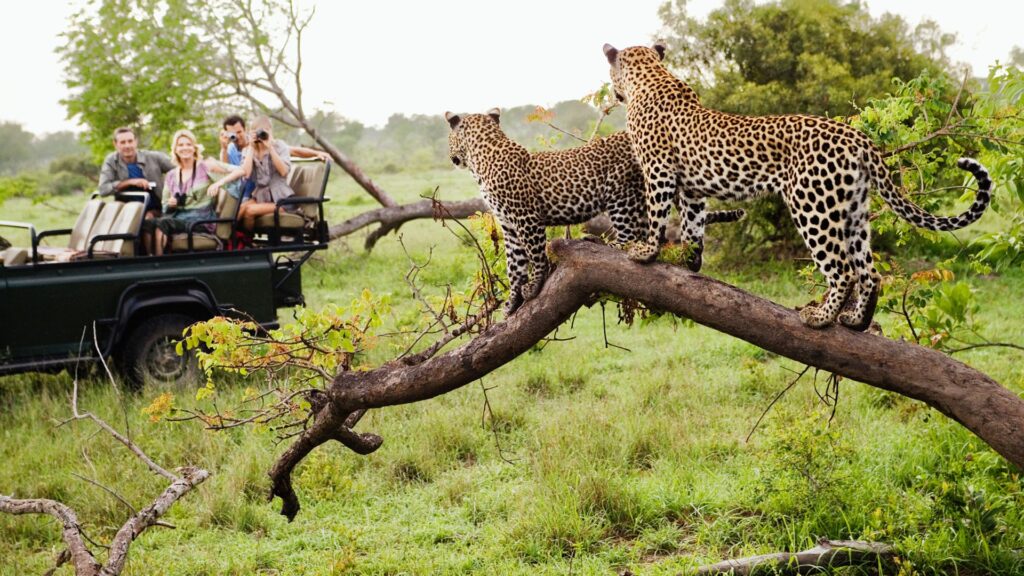
South Africa is in the southern part of Africa and shares borders with Botswana, Mozambique, Namibia, Swaziland, and Zimbabwe. It’s known as “The Rainbow Nation” because of its love for diversity, with three capitals, eleven languages, and lots of national parks and special places recognized by the United Nations. South Africa is famous for its stunning landscapes and amazing animals. You’ll find landmarks like Table Mountain and Kruger National Park, plus a vibrant cultural scene.
Places to Visit in South Africa
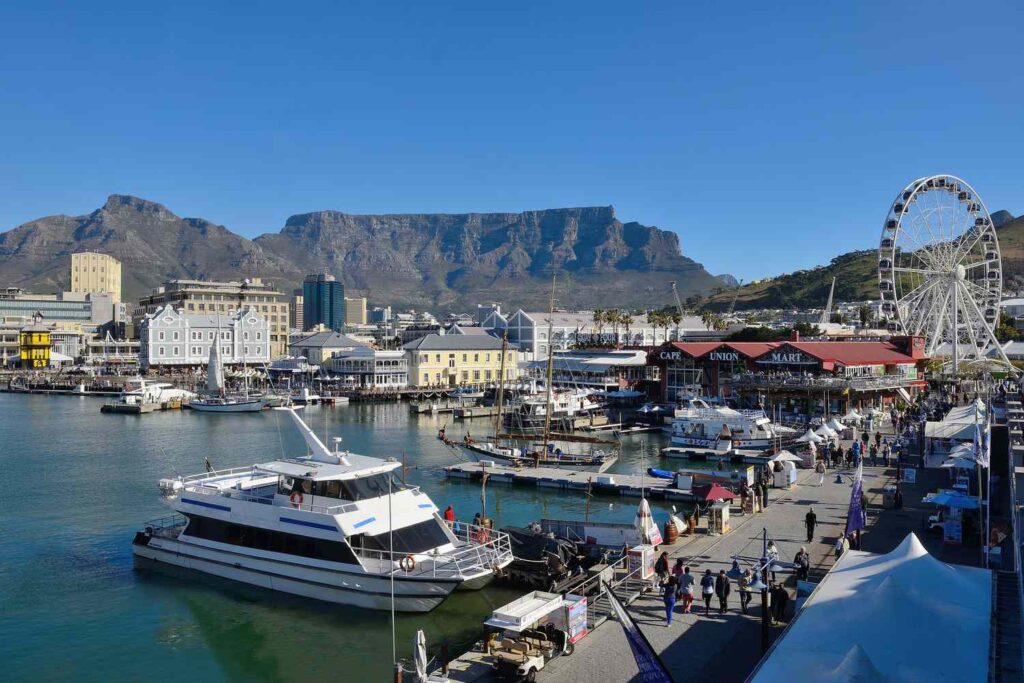
V&A Waterfront, Western Cape
The Victoria and Alfred Waterfront, set in the oldest working harbour in the Southern Hemisphere, is considered the most visited tourist attraction in South Africa. Each year the V&A Waterfront attracts 24 million visitors.
This 123-hectare development offers everything from residential to commercial property, including hotels, retail districts, and dining, leisure and entertainment facilities, heritage sites and tourism landmarks.
Highlights of the V&A Waterfront include Table Mountain as a dramatic backdrop, Zeitz Museum of Contemporary Art Africa (MOCAA), Two Oceans Aquarium, and extensive views of the ocean, city bowl and the mountain peaks of the Hottentots-Holland Mountains.

Table Mountain National Park, Western Cape
Table Mountain is South Africa’s most iconic landmark, as well as its most photographed attraction.
Part of the Cape Floral Region World Heritage Site, and Natural New 7 Wonders of the World, the 22 000-hectare Table Mountain National Park attracts, on average, nearly 4 million visitors each year.
Separated by developed urban areas, Table Mountain National Park is divided into three sections, namely:
- • Table Mountain section which borders on central Cape Town, Camps Bay, the Atlantic coast, the Southern Suburbs and Hout Bay.
- • Silvermine-Tokai section which covers Constantiaberg, Steenberg Peak and the Kalk Bay mountains.
- • Cape Point section which stretches from Cape Point and the Cape of Good Hope to Scarborough on the Atlantic coast and Simon’s Town on the False Bay coast.
Highlights of Table Mountain National Park include its namesake Table Mountain, Cape Point, Boulders Penguin Colony which is home to some 3000 African penguins, Signal Hill and Lions Head.

Kruger National Park, Limpopo/Mpumalanga
Extending 360km from north to south and 65km from east to west, Kruger National Park, one of the largest national parks in the world and South Africa’s first National Park, attracts an average of almost 2 million annual visitors.
Established in 1898, Kruger is the flagship of South African National Parks offering a wildlife experience that ranks amongst the best in the world. Offering the best of South Africa’s wildlife and nature, Kruger is home to an impressive number of species – 336 trees, 49 fish, 34 amphibians, 114 reptiles, 507 birds and 147 mammals.
Highlights of Kruger include the ever-popular Big Five (buffalo, elephant, leopard, lion and rhino), the Little Five (Buffalo Weaver, Elephant Shrew, Leopard Tortoise, Ant Lion and Rhino Beetle), Letaba Elephant Museum, Stevenson Hamilton Memorial Library, and the Jock of the Bushveld Route.
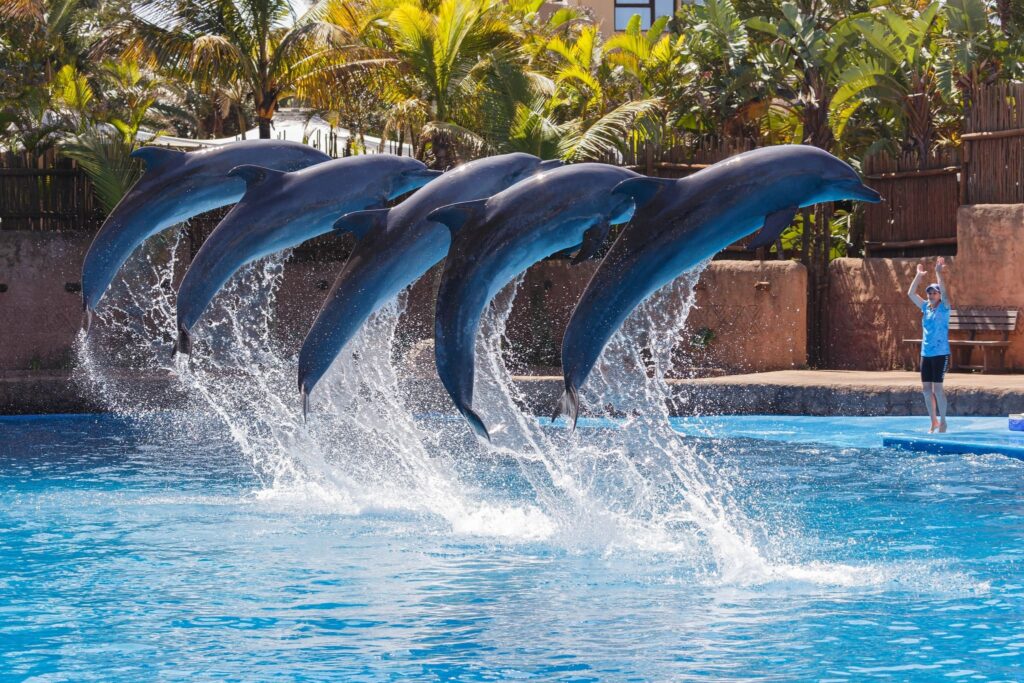
uShaka Marine World, KwaZulu-Natal
Offering a world of fun, excitement and entertainment on Durban’s Golden Mile, the 16-heactare uShaka Marine World theme park attracts around 1.5 million visitors every years.
uShaka Sea World, an underground aquarium designed around a series of shipwrecks, is the largest aquarium in the southern hemisphere and the fifth largest in the world by volume of water.
Highlights of this world-class attraction include:
- • Wet ‘n Wild – A waterpark of slides and pools, featuring the highest slide in Africa, the 18m Drop Zone.
- • Dangerous Creatures – A reptile park with snakes, frogs, lizards, spiders and Freddy the friendly iguana.
- • Chimp & Zee – A rope adventure park with the longest continuous belay system in Africa.
- • Sea Animal Encounters Island – Snorkel with exotic fish, meet a dolphin, feed a sting ray, or dive with sharks.
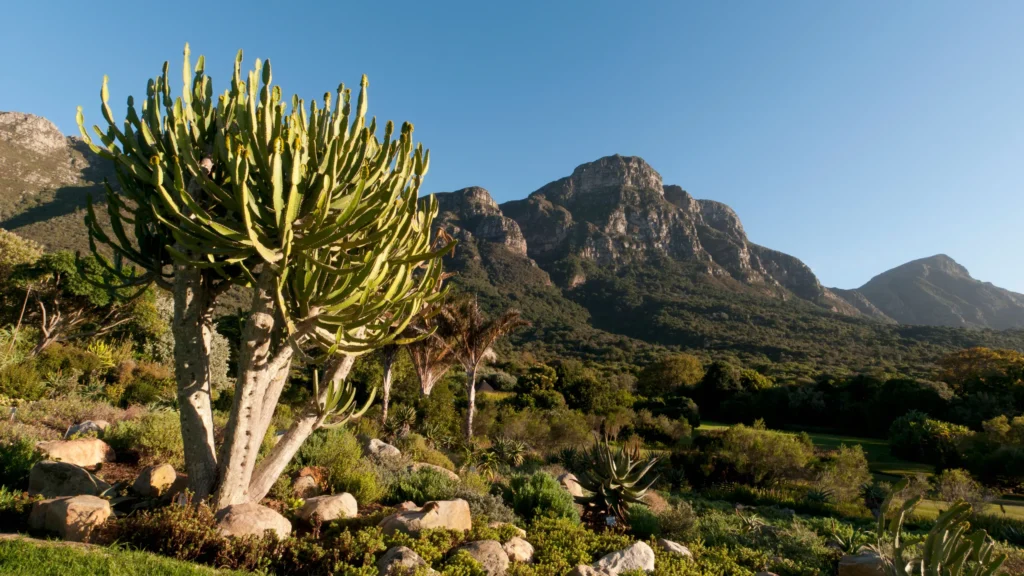
Kirstenbosch Botanical Gardens, Western Cape
Nestled at the foot of Table Mountain in Cape Town, Kirstenbosch National Botanical Garden is celebrated for its beauty and diversity of Cape flora. As one of the Cape’s most well-known tourist attractions, Kirstenbosch attracts just over a million visitors each year.
Founded in 1913, Kirstenbosch covers 528 hectares, of which only 36 hectares are cultivated, showcasing only indigenous South African plants. These cultivated gardens include a fragrance garden, a medicinal and useful plants garden, a Protea garden and a water-wise garden.
Highlights of Kirstenbosch include the five well-maintained, logged paths and gravel roads which wind through the entire estate. One of the most popular walks is the Centenary Tree Canopy Walkway, informally named ‘The Boomslang’. This curved steel and timber bridge that takes visitors on a journey from the forest floor, through the trees and out above the trees of the Arboretum.
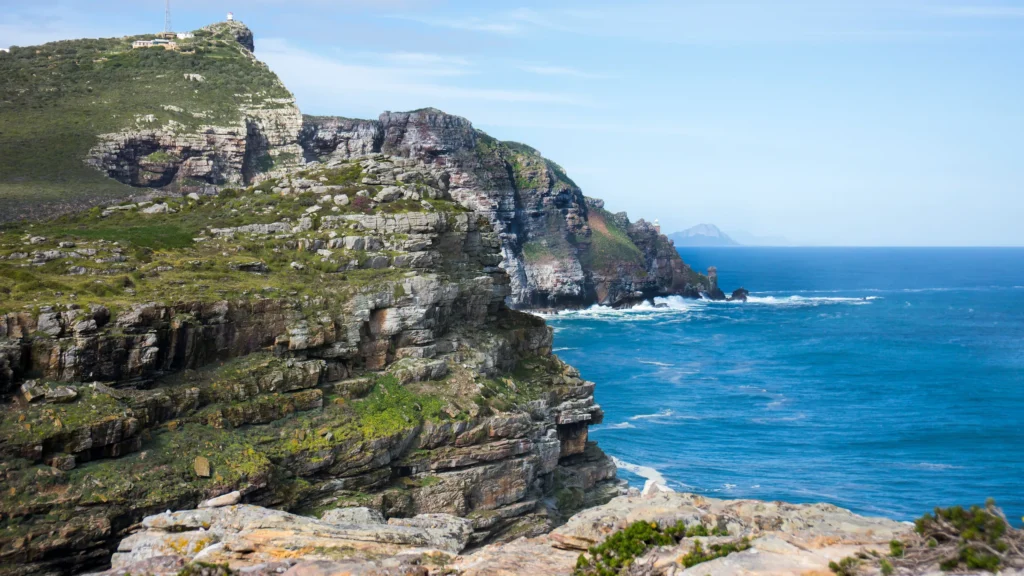
Cape of Good Hope, Western Cape
Part of Table Mountain National Park, the Cape of Good Hope is appreciated globally for its amazing land formation, diverse fauna and unique flora. Each year, on average, a million guests visit this iconic South African attraction.
A trip to the Cape of Good Hope is often regarded as mandatory when visiting the Mother City, Cape Town. Despite its location within a metropolitan area, The Cape of Good hope is home to thousand different species of Cape Fynbos, over 250 species of birds, Chacma Baboons, Cape Mountain Zebra and an array of antelope.
A highlight of the Cape of Good Hope is the two-day hiking trail that follows a 34km circular route. Beginning and ending at the entrance gate of the Cape of Good Hope, the hike offers fynbos trails, secluded beaches and overnight accommodation.
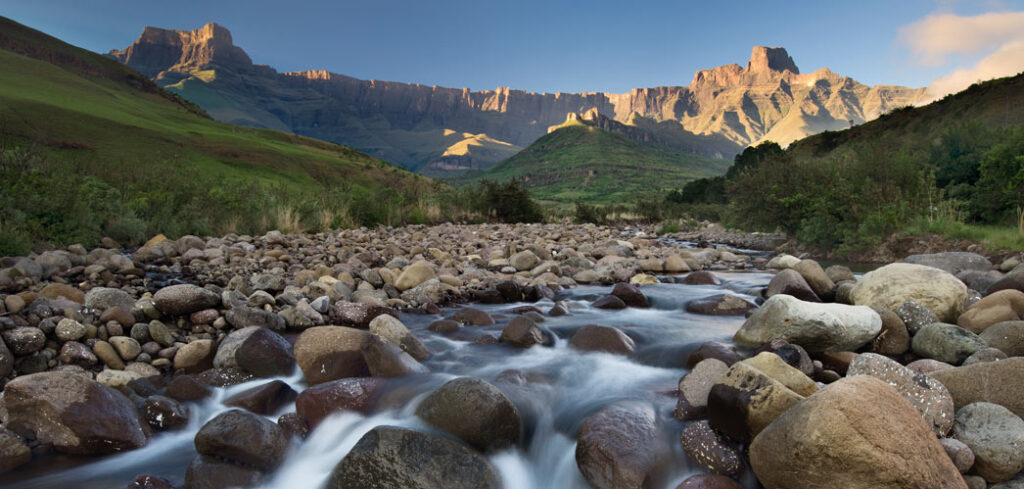
Drakensberg, KwaZulu-Natal
Declared an UNESCO World Heritage Site, the Drakensberg mountain range covers over 240 000 hectares of KwaZulu-Natal’s landscape. A must-see for avid nature enthusiasts and adventure seekers, the ‘Berg’ is visited by close to 620 000 guest each year.
The highest mountain range in the country, the Drakensberg reaches an impressive 3 482m above sea level. Known for its famous peaks – Giants Castle, Cathedral Peak and Mont-Aux-Sources – the Drakensberg is saturated with waterfalls, streams, rock pools, caves, incredible views, and over 600 examples of San rock paintings.
Some of the Berg’s best attractions include:
- • Tugela Falls – the second highest waterfall in the world
- • Sani Pass – the only road crossing the summit of the Drakensberg Mountain Range
- • The Amphitheatre – one of the world’s most impressive cliff faces
- • Mafadi – the highest mountain in South Africa.
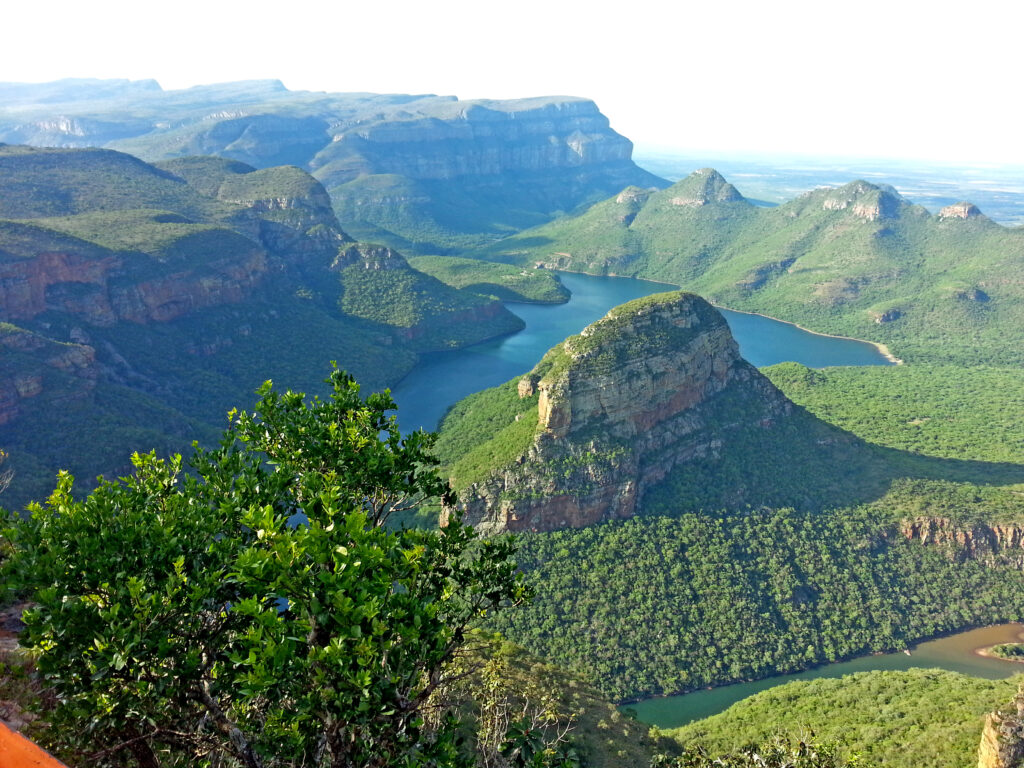
Blyde River Canyon, Mpumalanga
The third largest canyon in the world, after the Grand Canyon in the USA and the Fish River Canyon in Namibia, the Blyde River Canyon is one of the most-visited attractions in South Africa, attracting close on 600 000 visitors each year.
Situated on the Greater Drakensberg escarpment, the Blyde River Canyon supports large variety of life, including over 1 000 plant species, numerous fish and antelope species, hippos, crocodiles, and every South African primate species.
The R532 is the most popular road through the canyon; highlights along the drive include unique, visual-wonders and landscapes – Lisbon Falls, God’s Window, Bourke’s Luck Potholes, Pinnacle Rock and the Three Rondavels.
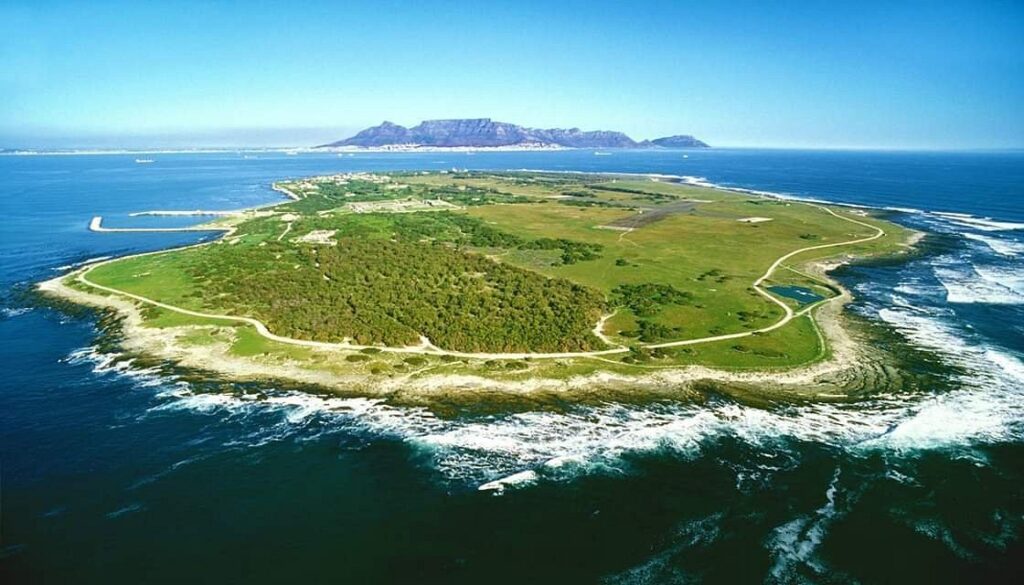
Robben Island
Another South African World Heritage Site, Robben Island is a popular destination for both local and international travellers, attracting close on 375 000 visitors in 2017.
Located 7km off the coast of Cape Town, Robben Island was used for the isolation of mainly political prisoners, including former South African president Nelson Mandela. The island also housed a hospital, mental institution, leper colony and military base.
A tour of Robben Island begins at the V&A Waterfront with a multimedia exhibition; from there, visitors take a scenic ferry trip to the island. Once on the island, a former political prisoner of the island leads a unique tour of the islands many historic facilities.
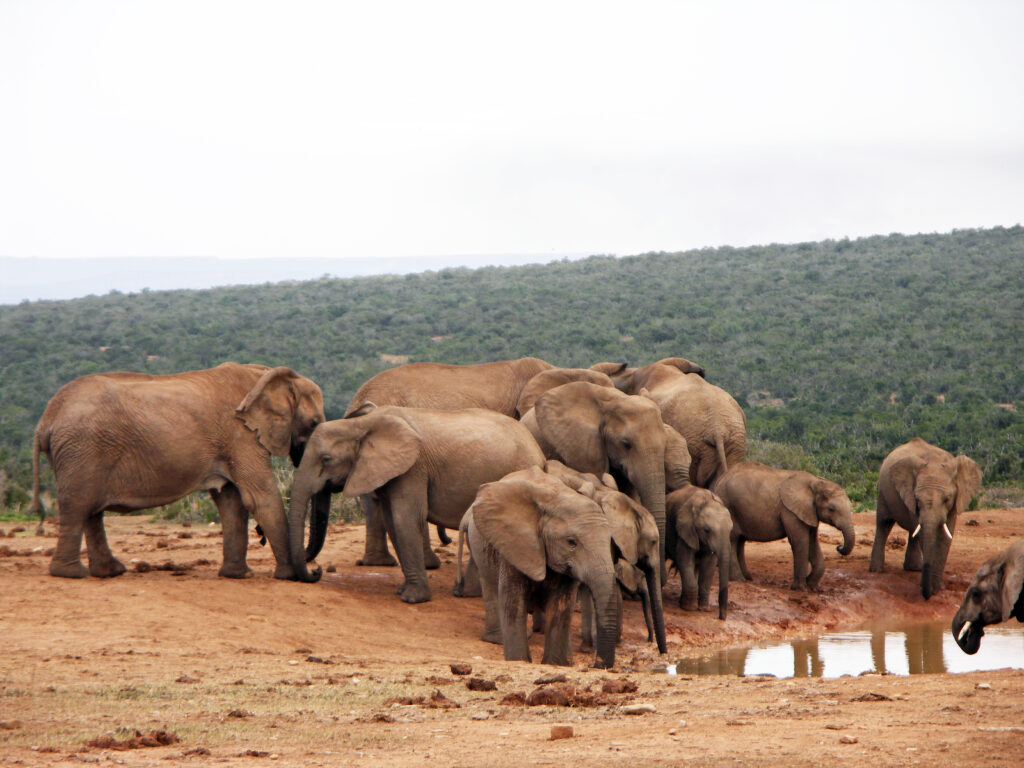
Addo Elephant National Park, Eastern Cape
South Africa’s third largest national park, Addo Elephant National Park covers an expanse of 120 000 hectares, including Bird Island and St Croix Island in Algoa Bay. This diverse park in the Eastern Cape attracted just over 300 000 visitors in 2018.
Established in 1931 to protect the remaining 11 elephants in the area, the park is now home to a herd of over 600 elephants. Addo prides itself as a ‘Big 7’ reserve, providing sanctuary to elephant, rhino, lion, buffalo, leopard, southern right whale and great white shark.
A visit to Addo is highlight for any nature enthusiast. Guided game drives at sunrise, sunset and at night offer more opportunities for sighting the big five, while on marine tours guests might catch a glimpse of a great white shark or southern right whale.